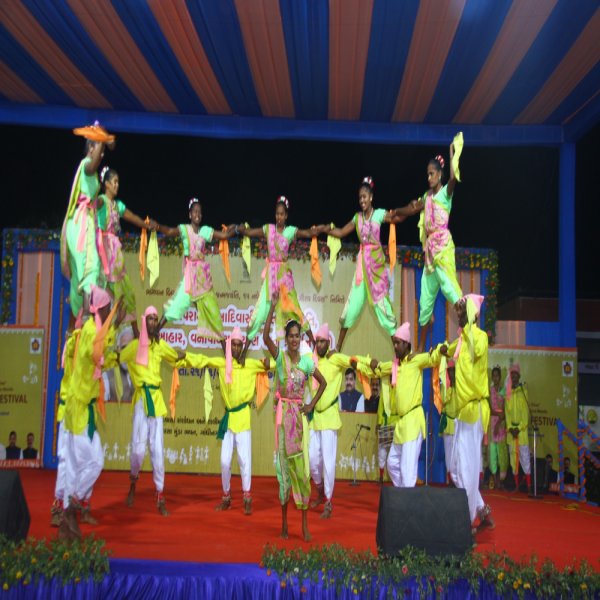tribal dance
Kahadiya Dance, gujarat

The Kunbi tribe in the Dang district of Gujarat, with tribals making up 94.64% of the entire population, retains very strong traditions of dancing. Among them is the Kahadiya Dance, a sacred dance with ritual meaning, performed to appease deities and to ward off calamities. The dance reflects the tribe’s deep connection with nature and spirituality, believed to channel divine strength. Dances like Bhayannritya, Thakarenritya, and Pavrikke Madal are performed on different occasions, showcasing the richness of their spiritual and cultural heritage. In the Kahadiya Dance, men and women wear vibrant, traditional attire. Men don white dhotis with full-sleeved bush shirts and vests, while women wear knee-length dark colourful printed sarees with plates. they folded saree plates between legs and put border at the back side of the waist. they wear traditional blouses. Now a days Their attire is often embroidered with cotton and golden Zari, with unique prints from South India. Women wear elaborate silver jewellery, including bracelets, necklaces, and heavy anklets. men wear wooden or mud masks during the dance. The colourful and carefully crafted costumes elevate the beauty and cultural significance of the performance The Kahadiya Dance is central to Kunbi religious life, performed during festivals in honour of deities like Mavlidevi and Kansridevi. Held in months such as Chaitra and Vaishakh(March-April) according to Hindu Gujarati calendar these dances are marked by communal participation, often held in circular formations. Young men and women dance in unison, maintaining family decorum. Elders teach the dance, passing it down through generations, while younger participants learn by imitation. Exemptions apply for pregnant and menstruating women, reflecting respect for ritual purity within the tribe.



